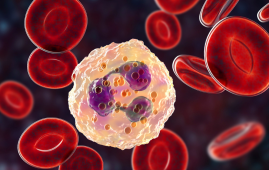

According to new research, women who have experienced domestic abuse are more likely to develop atopic disorders such as asthma.
Today’s issue of the Journal of Allergy and Clinical Immunology: In practice, the University of Birmingham-led study discovered that a much higher percentage of women with atopic disorders and a history of domestic abuse and violence were exposed to domestic abuse and violence than those who were not.
Dr. Joht Singh Chandan from the University of Birmingham and corresponding author of the study said, “After adjusting for possible cofounders, our results show women with a recorded exposure to domestic violence and abuse had a 52% increased risk of developing atopic diseases,”
“Domestic violence and abuse is a global issue that disproportionately affects women. We set out to deepen our understanding of the health impacts of domestic violence so evidence-based public health policies can be further developed to address not only domestic violence but secondary effects like the development of atopic diseases.”
The researchers conducted a retrospective open cohort analysis in the United Kingdom, comparing adult women (aged 18 and older) with a physician-recorded experience to domestic violence to women over 18 who had no recorded exposure. Patients who had previously reported atopic disease were excluded from the trial.
A total of 13,852 women were identified as having been exposed to domestic abuse and matched with 49,036 similar women who had not been exposed. Atopic illness was detected in 967/13,852 women in the exposed group (incidence rate (IR) 20.10 per 1,000 py) compared to 2,607/49,036 in the unexposed group (IR 13.24 per 1,000 py).
The study had some drawbacks. Women in the exposed group were more likely than women in the unexposed group to be current smokers. The database sometimes lacked ethnicity data, and the median follow-up for both groups of women was rather brief given the recurrent nature of atopic disease. Researchers expect that future studies will resolve these shortcomings.
more recommended stories
 Fat-Regulating Enzyme Offers New Target for Obesity
Fat-Regulating Enzyme Offers New Target for ObesityKey Highlights (Quick Summary) Researchers identified.
 Spatial Computing Explains How Brain Organizes Cognition
Spatial Computing Explains How Brain Organizes CognitionKey Takeaways (Quick Summary) MIT researchers.
 Gestational Diabetes Risk Identified by Blood Metabolites
Gestational Diabetes Risk Identified by Blood MetabolitesKey Takeaways (Quick Summary for Clinicians).
 Phage Therapy Study Reveals RNA-Based Infection Control
Phage Therapy Study Reveals RNA-Based Infection ControlKey Takeaways (Quick Summary) Researchers uncovered.
 Pelvic Floor Disorders: Treatable Yet Often Ignored
Pelvic Floor Disorders: Treatable Yet Often IgnoredKey Takeaways (Quick Summary) Pelvic floor.
 Urine-Based microRNA Aging Clock Predicts Biological Age
Urine-Based microRNA Aging Clock Predicts Biological AgeKey Takeaways (Quick Summary) Researchers developed.
 Circadian Control of Neutrophils in Myocardial Infarction
Circadian Control of Neutrophils in Myocardial InfarctionKey Takeaways for HCPs Neutrophil activity.
 E-Cigarette Use and Heart Attack Risk in Former Smokers
E-Cigarette Use and Heart Attack Risk in Former SmokersKey Takeaways for Clinicians and Nurses.
 Ultramarathon Physiology: What HCPs Should Know?
Ultramarathon Physiology: What HCPs Should Know?Ultramarathon Metabolism: What Happens to the.
 High-Intensity Training and Oxidative Stress Insights
High-Intensity Training and Oxidative Stress InsightsNew Evidence Linking High-Intensity Training and.

Leave a Comment